Leather is a luxurious material that has been used for centuries in furniture, clothing and other accessories. It can be expensive to buy genuine leather, but there is an affordable alternative: fake or faux leather.
This man-made material looks very similar to the real thing, and it can be patinated to create an antique look. In this comprehensive guide, we will answer all of your questions about how to patina fake leather.
What Is Patina?
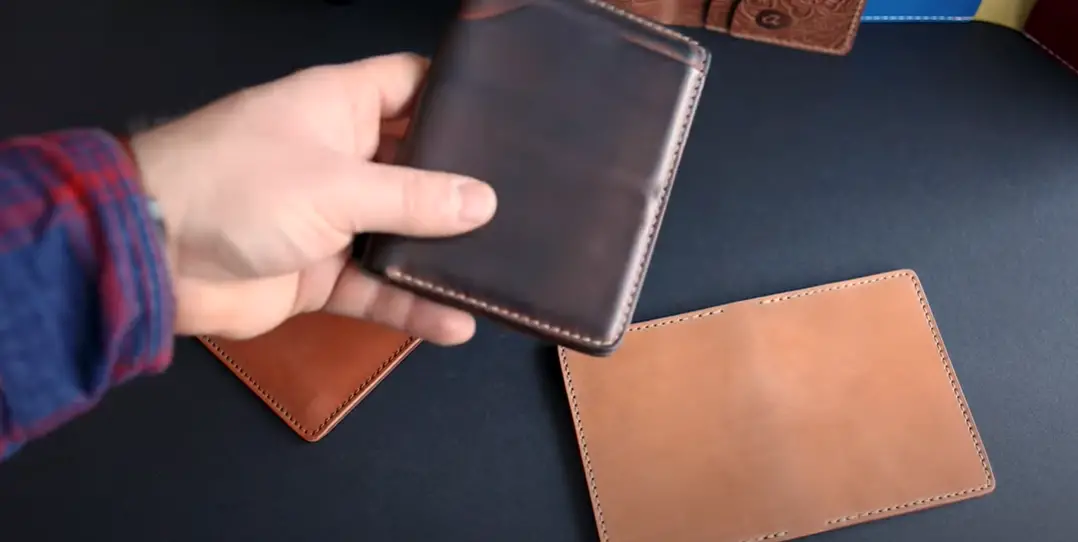
Patina is a thin layer that forms on the surface of metal, stone, or other materials over time. Patinas can be natural, like the green patina that forms on copper over time as it’s exposed to oxygen and water. They can also be artificial, like the blue-green patina you might see on a statue that has been treated with a special chemical.
Fake leather, or pleather, is a man-made material that imitates the look and feel of real leather. It’s often used in clothing, upholstery, and accessories because it’s cheaper than genuine leather and doesn’t require any special care.
Pleather can be difficult to work with because it doesn’t absorb dye the way real leather does. This can make it hard to get a consistent color. However, with a little patience and the right products, you can achieve a beautiful patina on your fake leather projects. [1]
Reasons Why Faux Leather Does Not Patina
If you’re wondering why your faux leather doesn’t seem to be developing a patina like real leather does, there are a few possible explanations.
- The material itself is not conducive to developing a patina. Some fake leathers are made from polyurethane or PVC, which don’t age in the same way that natural leather does.
- The dye used to color the faux leather is not compatible with the patina process. Some dyes will stop a patina from developing, so it is important to research this before you buy if you want an aged look.
- It’s possible that you’re not giving your faux leather enough time to develop a patina. Don’t expect your leather furniture to look great overnight. It takes time for the leather to age and develop a beautiful patina. [1]
Faux Leather Is Not Porous
This means that unlike genuine leather, it won’t absorb dyes or other treatments as easily. That’s why you have to be careful when working with chemicals like alcohol or vinegar, which can damage faux leather if used incorrectly.
To get started, you’ll need to gather a few supplies.
- First, you’ll have some sort of alcohol. Vodka works well, but rubbing alcohol will also do the trick. You’ll also need a container to mix everything in, and some cotton balls or a soft cloth.
- Next, you’ll need to create your patina solution. To do this, simply mix equal parts alcohol and vinegar in your container. Once it’s mixed, dip your cotton ball or cloth in the solution and start applying it to the leather.
Be sure to work in small sections, and don’t forget to evenly distribute the solution. You can also use a brush to apply the patina if you prefer. [1]
Faux Leather Does Not Darken With Time
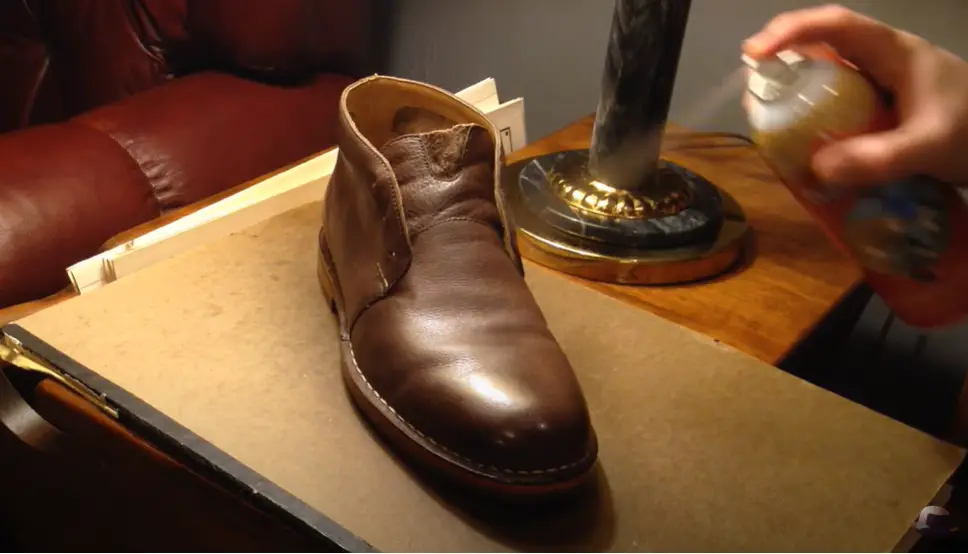
Faux leather does not change color over time like real leather. The pigments in the material are what give it its color, and those pigments don’t react to sunlight or other pollutants the way natural fibers do. This means that your faux leather couch will look the same ten years from now as it does today.
This can be both a good and a bad thing. On the one hand, you don’t have to worry about your furniture’s color changing over time and not matching the rest of your decor. On the other hand, if you do want to change the look of your faux leather furniture, it can be difficult to do so.
Faux Leather Is Not Natural
Faux leather is a fabric that looks and feels like genuine leather. Fauxs are made from either PVC or polyurethane. They are easy to take care of, but they are not as durable as natural materials. They also do not look as good over time.
Patina is the way to go if you’re looking for an aged look on your faux leather. Over time, a thin layer of oxidation can form on any fabric, giving it a more vintage look. This can be great for fabrics that won’t be used very often because they won’t get damaged as easily.
Faux Leather Has Stabilizing Chemicals
Faux leather is a material that can be treated with chemicals to make it more durable. But these treatments also mean the product will never look nicer over time.
To give your new bag a lasting finish, you’ll need to remove any stabilizing chemicals. This can be done with solvents like acetone or alcohol and should not leave behind residue on the fabric.
Once you have removed the stabilizing chemicals from your faux leather, you can start to create a patina. Remember that this material is more delicate than real leather. Be careful not to damage it while you are finishing it.
Here are a few tips for creating a patina on faux leather:
- Use a soft brush to apply the patina. A toothbrush or makeup brush will work well.
- Apply the patina evenly over the surface of the faux leather.
- Allow the patina to dry completely before using or storing the faux leather item.
You can create a beautiful patina on faux leather that will give it an antique look. Before you try the technique out for yourself, be sure to practice with some scrap pieces of your final project first. [1]
How to Patina Fake Leather Guide
If you’re looking for a beautiful, aged look for your leather projects, you may be wondering how to patina fake leather.
Fake leather, also known as pleather or vinyl, is a synthetic material made to look like leather. It’s often used in upholstery, clothing, and other applications where real leather would be too expensive or difficult to maintain. While it doesn’t have the same natural aging process as real leather, you can still create a beautiful patina on fake leather with the right products and techniques.
There are a few different ways to patina fake leather, but the most common method is to use a leather dye or paint. This will give your faux leather a new, aged look that can be customized to match your project. You can also add other effects like cracks and wrinkles for an even more realistic finish.
When applying the dye or paint, it’s important to work in small sections and build up the color gradually. This will help you avoid any unwanted blotches or streaks in the final finish. Once you’re happy with the way your patina looks, you can seal it with a clear topcoat to protect it from wear and tear. [2]
Creating a Patina on Faux Leather: Artful Aging
Adding a patina to faux leather can give it a unique and weathered appearance. To guide you through this creative process, we’ve compiled a table with multiple columns outlining the steps and considerations for patina-ing faux leather.
| Steps | Procedure | Materials Needed | Time Required | Difficulty Level |
|---|---|---|---|---|
| 1 | Clean the Faux Leather | Mild soap, water, soft cloth | 15 minutes | Easy |
| 2 | Prepare a Patina Solution | Acrylic paint (desired color), water, sponge or brush | 10 minutes | Easy |
| 3 | Apply the Patina | Sponge or brush | 30-60 minutes (drying time may vary) | Moderate |
| 4 | Blend and Distress | Fine-grit sandpaper, cloth | 20 minutes | Moderate |
| 5 | Seal the Patina | Acrylic sealer spray | 15 minutes (drying time included) | Easy |
Explanation of the Table:
- Steps: Lists the sequential steps for creating a patina on faux leather.
- Procedure: Provides a brief description of what to do in each step.
- Materials Needed: Lists the necessary materials and tools for each step of the process.
- Time Required: Indicates the estimated time needed for each step, including drying times.
- Difficulty Level: Rates the difficulty of each step, with “Easy” indicating simple tasks and “Moderate” for slightly more complex actions.
By following these steps and considering the materials required, time involved, and difficulty level, you can artfully age your faux leather, creating a patina that adds character and charm to your belongings.
FAQ
Can You Patina Faux Leather?
Yes, you can patina faux leather! Faux leather is a great alternative to real because it’s more affordable and easier to care for. Adding patina to fake items can give them an antique look.
This can make them more unique and interesting. Don’t just settle for any old thing when you can create your own one-of-a-kind piece of art with patinated fauxs!
Here are some easy steps to follow to patina your faux leather:
- First, clean the surface of the leather with a damp cloth to remove any dirt or dust.
- Next, apply a thin layer of patina gel with a sponge or brush. Allow the gel to dry for about 30 minutes.
- Then, use a clean cloth to rub the surface of the leather in a circular motion. This will help to evenly distribute the patina gel.
- Finally, allow the leather to dry completely before using it.
How Do You Make Fake Leather Look Old?
There are a few ways that you can make fake leather look old.
- One way is to use a leather dye. You can also use a leather conditioner or oil to give it an aged look.
- Another way is to use paint or other pigments to add color and depth to the fake leather.
- Finally, you can distress the fake leather by sanding it or using other abrasive techniques.

Leather is a material that has been around for centuries. It’s durable, comfortable, and stylish. But it can also be expensive. That’s why many people opt for fake leather instead. Fake leather is made from synthetic materials and is usually much cheaper than the real thing.
But just because it’s fake doesn’t mean it has to look cheap. There are a few ways you can make fake leather look old, giving it some character and style.
- One way to age fake leather is to use a leather dye. You can find these dyes at most craft stores. Just make sure to get one that is made specifically for faux leather. Apply the dye according to the instructions on the package.
- You can also use a leather conditioner or oil to give your fake leather an aged look. Apply it in the same way you would with the dye. Experiment with different products until you find one that you like.
- Another way to add some depth and character to fake leather is to use paint or other pigments. You can find these at most art supply stores. Just make sure the paint is compatible with faux leather. Apply it in thin layers, building up the color until you’re happy with the results.
- Finally, you can distress the fake leather to give it an even more aged look. To do this, you’ll need to sand it down or use another abrasive technique. This will take away some of the color and make the leather look worn. Experiment on a scrap piece of faux leather before you try it on your final project.
How Do You Make Fake Leather Look Darker?
You can make fake leather look darker by using a patina. A patina is a thin layer of color that develops on the surface of metal over time, and it can also be used to darken the color of fake leather. You can create a patina on fake leather by applying a chemical solution to the surface of the leather and then allowing it to dry.
There are a few different solutions that you can use to create a patina on fake leather, but one of the most popular is liver of sulfur. Liver of sulfur is a chemical compound that contains sulfur, and it can be found at most craft stores.
To use a liver of sulfur to create a patina on fake leather, you will need to mix it with water to create a solution. Once the solution is mixed, you can apply it to the surface of the fake leather with a cloth or brush.
Does PU leather get patina?

Yes! You can patina PU leather, and it’s actually quite easy to do
There are a few different methods you can use to patina PU leather, but we’ll be focusing on the two most popular: using vinegar and using alcohol.
Vinegar Method:
You’ll need:
- Vinegar
- A container large enough to submerge your item in
- Gloves
- A brush
Instructions:
Depending on how dark you want the patina to be, submerge your item in vinegar for a few hours or a few days. Check on it periodically to make sure it’s still submerged.
After you are happy with the darkness of the patina, take your item out of the vinegar and rinse it off with water.
Use your brush to apply a layer of leather conditioner. This will help protect the leather and keep it from drying out.
How Do You Tint Faux Leather?
You can tint faux leather by applying a thin layer of leather dye or paint to the surface. You’ll need to experiment with different colors and techniques to get the look you want. Once you’re happy with the color, you can seal it with a clear topcoat.
If you want to add a bit of texture to your faux leather, you can try using a dry brush technique. First, apply a base color of paint or dye. Then, using a clean, dry brush, lightly brush on a darker shade of paint or dye. The darker color will highlight the raised areas and create a distressed look.
Once you’re happy with the color and texture of your faux leather, you can seal it with a clear topcoat to protect it from wear and tear.
Can You Spray Paint Pleather?
Yes, you can spray paint pleather! In fact, it’s one of the easiest materials to work with when it comes to painting. All you need is a can of spray paint and a few minutes, and you’ll be able to transform your pleather into something new and exciting.
There are a few things to keep in mind when spray painting pleather, though.
- First, you’ll want to make sure that you use a primer designed for use on plastic surfaces. This will help the paint to adhere better and create a more even finish.
- Second, it’s important to choose the right paint. Not all types of paint will work well on pleather, so you’ll need to do some research to find the right kind. Acrylic paint is a good option, but make sure to test it on a small area first to be sure it will work.
- Finally, don’t forget to seal your pleather once you’re finished painting it. This will help protect the paint and keep the pleather looking its best.
What is patina, and why would I want to add it to fake leather?
Patina is a term used to describe the natural aging and wear that occurs on the surface of materials like leather over time. Adding patina to fake leather is a way to give it a weathered and vintage look, enhancing its aesthetic appeal.
What materials and tools do I need to patina fake leather?
To patina fake leather, you’ll need sandpaper, rubbing alcohol, cotton balls, acrylic paint, a soft cloth or sponge, and a sealer. The specific colors of acrylic paint you choose will depend on the desired patina effect.
How do I prepare the fake leather for patina?
Start by cleaning the fake leather thoroughly with rubbing alcohol and a cotton ball. This removes any dirt, oils, or residues that might interfere with the patina process. Let it dry completely before proceeding.
What are some techniques for adding patina to fake leather?
There are several techniques you can use to patina fake leather. Some common methods include dry brushing, sponging, and using a cloth to apply diluted acrylic paint in layers. Experiment with different techniques to achieve the desired aged look.
Can I use water-based or oil-based acrylic paint for patina?
You can use either water-based or oil-based acrylic paint for patina, depending on your preference. Water-based paints are easier to clean up and have a quicker drying time, while oil-based paints may provide a more durable finish. Choose the type that works best for your project.
How do I achieve a distressed or cracked leather look on fake leather?
To create a distressed or cracked leather look on fake leather, you can lightly sand the surface after applying the base paint layer. This will create texture and simulate the appearance of aged leather. Be gentle to avoid damaging the material.
What should I do after applying the patina to fake leather?
After you’ve achieved the desired patina effect, allow the fake leather to dry thoroughly. Then, apply a clear sealer to protect the finish and make it more durable. Follow the manufacturer’s instructions on the sealer for best results.
How can I maintain the patina on fake leather over time?
To maintain the patina on fake leather, avoid exposing it to excessive moisture or direct sunlight, as these factors can cause the patina to fade or deteriorate. Regularly clean the surface with a damp cloth to remove dust and dirt, and reapply a clear sealer if needed.
Can I change the patina on fake leather if I’m not satisfied with the results?
Yes, you can change the patina on fake leather if you’re not satisfied with the results. Simply sand off the existing patina carefully and start the patina process again using different colors or techniques until you achieve your desired look.
Useful Video: Patina Process
Conclusion
There you have it! A simple way to patina fake leather and give it an aged look. This process is really easy and can be done in just a few minutes. If you’ve been looking for a quick and easy way to age your faux leather pieces, then this is the perfect solution for you. Give it a try and see how well it works for you.
Do you have any tips or tricks for aging fake leather? Share them with us in the comments below. We would love to hear from you!
References
- https://favoredleather.com/does-faux-leather-patina/
- https://leatherek.com/how-to-patina-fake-leather/

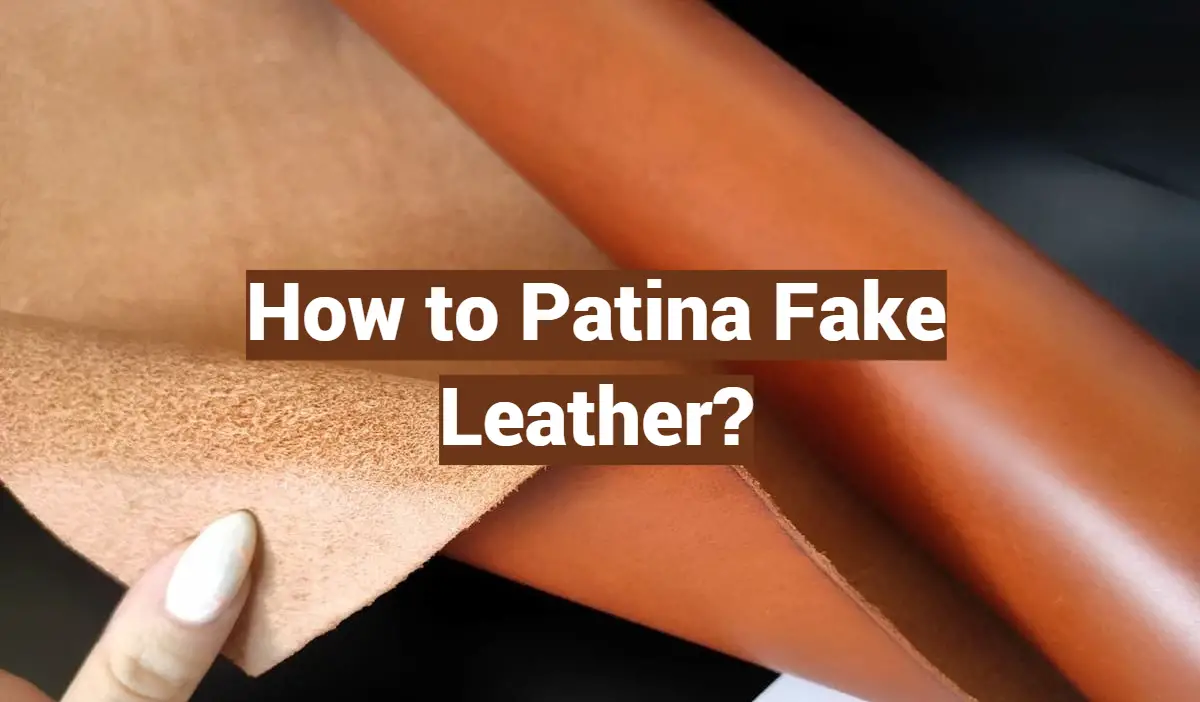

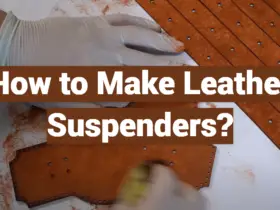

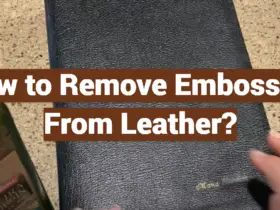

I’ve had great success using shoe polish to darken and patina my faux leather bags. I use a neutral polish and apply thin coats with a soft cloth. The polish soaks in and gives the fake leather a rich, burnished look. Just be sure to apply it sparingly so it doesn’t get gummy. A little goes a long way!
When I want to distress my faux leather jacket, I use fine grit sandpaper. I focus on areas that would naturally show wear like the edges and seams. Lightly sanding removes the top coating and creates a scuffed effect. I finish by rubbing the sanded parts with mink oil to soften the leather back up. It gives it a naturally worn look.
To age my faux leather furniture, I mix equal parts water and vinegar in a spray bottle and lightly mist the surface. Let it soak in for a few minutes. The acetic acid acts like a mild acid on the PU leather and breaks down the coating, creating a weathered appearance. I use steel wool to buff afterwards for an extra worn effect.
I gave my vegan leather bag a vintage look by using carnauba wax. I rubbed the wax on evenly with a horsehair shoe brush. The wax soaked into the grain subtly darkening it. After it dried, I took fine grit sandpaper to the edges and corners to smooth and lighten them. I love how it made the faux leather look like an antique.
When I want to patina a fake Louis Vuitton bag, I use oils. I apply a coat of olive oil followed by an application of coconut oil. The oils penetrate the vinyl slowly creating a deeper, richer tone. I then take a soft cloth to gently buff the leather. The buffing blends the oils together and evens out the patina.
I was able to age my faux leather sofa by using heat from a hairdryer. I concentrated the heat on areas that would naturally wear over time like the arms and cushions. The heat breaks down the finish, causing it to crack and peel. I then rubbed in a furniture polish and brushed the whole sofa with a wire brush. It gave my sofa a timeworn look and feel.
To give my PU leather purse a distressed appearance, I used matte acrylic paint. I chose paint colors that complemented the original tone of the faux leather. I then painted irregular splotches and used a wet rag to gently rub and remove some of the paint. This created a mottled, variegated effect similar to wear and fading. I sealed it with a matte varnish spray afterwards.
I discovered I can use instant coffee to antique vegan leather. I brewed a strong pot and applied it to the surface while still warm with a sponge brush. As the coffee soaked in, it subtly stained the faux leather. I then took fine grit sandpaper and buffed the raised areas to lighten them back up. This gave my bag a vintage leather patina that I love.
To age my faux leather jacket, I hung it near a heat source to dry out the leather. After a few days, the PU leather became cracked and brittle. I then took a rubbing compound normally used for cars and worked it into the leather with a buffing wheel. This smoothed out the finish again while keeping an aged texture. I finished by rubbing in mink oil to soften and rehydrate the leather.
I was able to weather my vegan leather couch by first misting it with water and letting it air dry to create cracks and creases. Once dry, I mixed white and black acrylic paint to achieve a grey color. I used a sponge to dab on the paint in irregular patterns. As the paint dried, I scratched some areas with a coin to mimic scuffs and scrapes. The multi-toned, scratched effect gave my couch a timeworn look.
To age faux leather quickly, I use a heat gun. I wave the heat gun across the surface, moving continuously to avoid burning or melting one spot. The intense heat causes the PU leather to bubble and deform, mimicking years of wear. I finish by rubbing the leather vigorously with a nylon scrub brush. This smooths the finish back down while retaining the distressed texture.
I patinated my fake leather bag using shoe cream in a darker color than the original. I applied the cream with a dauber in small circular motions. After absorbing 20-30 minutes, I rubbed the cream in with a soft cloth. This darkened the bag overall while retaining the original tone in the creases and edges just like aged leather. I finished with a light coat ofresolene for sheen and protection.